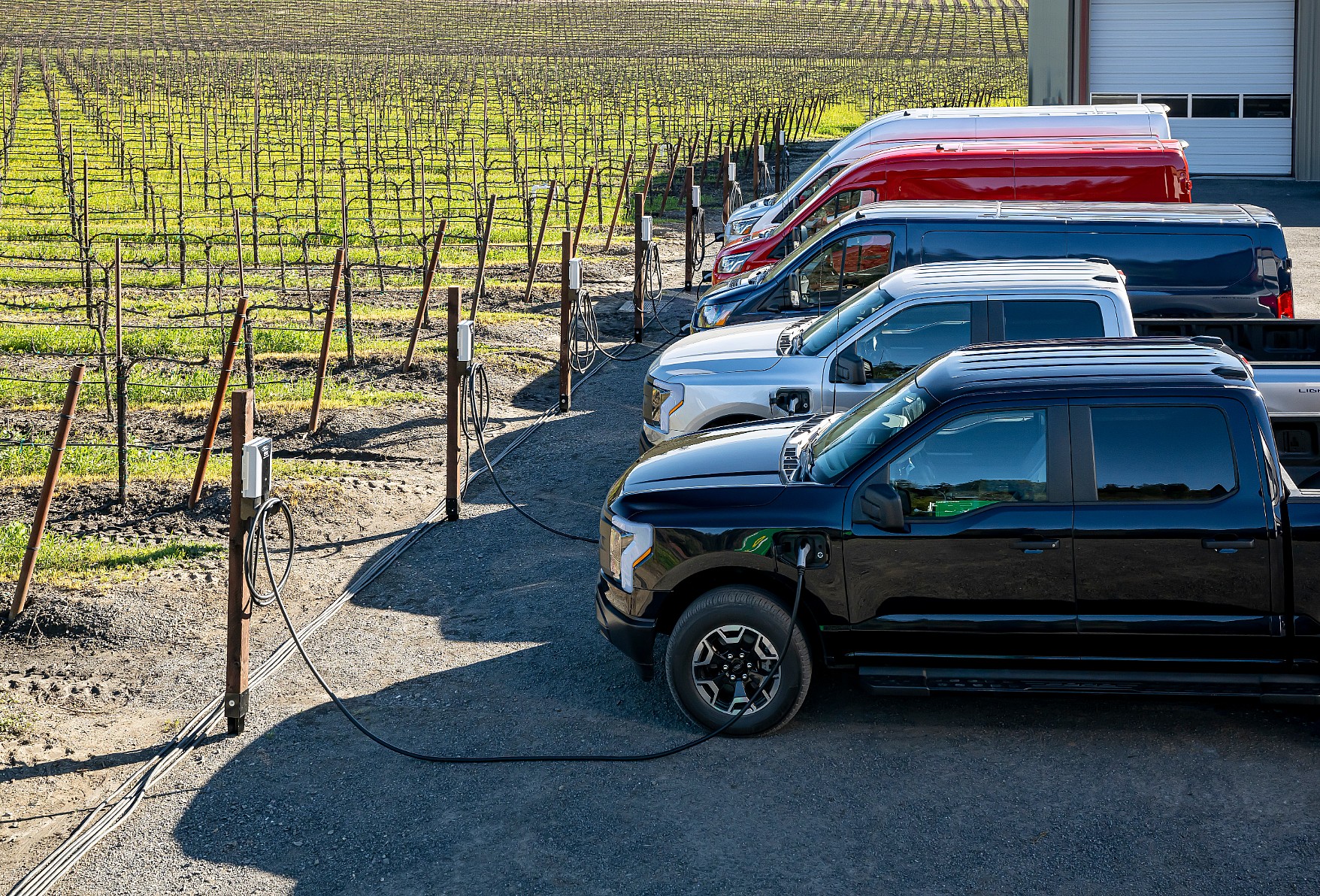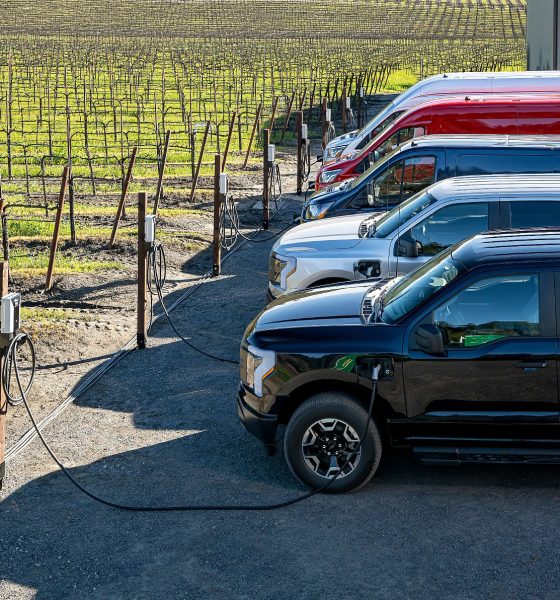Elon Musk endorsed Donald Trump for President in the 2024 election over the weekend, and now, some Tesla and electric vehicle (EV) enthusiasts are pointing to anti-EV legislation proposed last year by Trump’s newly selected Vice Presidential candidate.
On Monday, Trump announced that his running mate would be Senator JD Vance (R-OH), following Musk’s endorsement for the former president on Saturday. Some in the Tesla and EV communities are now pointing out that Vance last year proposed the Drive American Act, a bill intending to replace the $7,500 EV tax credit with a subsidy of the same amount for U.S.-built gas vehicles.
“Right now, the official policy of the Biden administration is to spend billions of dollars on subsidies for electric vehicles made overseas,” Senator Vance wrote in the proposal. “If we’re subsidizing anything, it ought to be Ohio workers – not the green energy daydreams that are offshoring their jobs to China. We can secure a bright future for American autoworkers by passing this legislation and reversing the misguided policies of the Biden administration.”
UPDATE: Donald Trump interested in Elon Musk for Advisory role if re-elected: report
Vance also wrote an opinion piece just a week earlier than the Drive American Act, encouraging the then-striking United Auto Workers (UAW) union to avoid what he called “the Biden administration’s unjust transition to EVs.”
“These are the facts: China dominates the global supply chain for electric vehicles — especially for critical minerals and batteries,” Vance wrote in the op-ed.
“While an electric vehicle may bear the logo of Ford, Chevy, or Chrysler, its core components were probably made in China with Chinese labor and Chinese materials. Two of the Big Three automakers are losing massive amounts of money on electric vehicles. Ford, for example, loses $32,000 on every EV they sell. These losses lead to lower wages for workers, fewer auto jobs being available, and higher prices for consumers.”
Last month, Trump told rally attendees that he was a “big fan of electric cars,” and a “big fan of Elon,” despite some of his anti-EV sentiments in the past.
In March, Vance said on X that he was fully supportive of Trump’s previous claim that an economic “bloodbath” would ensue for the U.S. auto industry if Biden continued down the current path, noting that many media outlets focused too heavily on the terminology.
Donald Trump said that a bloodbath would happen to the American auto industry if Biden kept on promoting Chinese made EVs.
He of course is 100 percent correct.
All other reporting about his "bloodbath" comment is complete propaganda. The media should be ashamed.
— JD Vance (@JDVance) March 17, 2024
Musk also congratulated Vance on being appointed to the Republican ticket on Monday, saying that it had been an “excellent decision” by Trump.
–––––––
TRUMP
VANCE
–––––––Resounds with victory
— Elon Musk (@elonmusk) July 15, 2024
What are your thoughts? Let me know at zach@teslarati.com, find me on X at @zacharyvisconti, or send us tips at tips@teslarati.com.

Elon Musk
Elon Musk confirms xAI’s purchase of five 380 MW natural gas turbines
The deal, which was confirmed by Musk on X, highlights xAI’s effort to aggressively scale its operations.

xAI, Elon Musk’s artificial intelligence startup, has purchased five additional 380 MW natural gas turbines from South Korea’s Doosan Enerbility to power its growing supercomputer clusters.
The deal, which was confirmed by Musk on X, highlights xAI’s effort to aggressively scale its operations.
xAI’s turbine deal details
News of xAI’s new turbines was shared on social media platform X, with user @SemiAnalysis_ stating that the turbines were produced by South Korea’s Doosan Enerbility. As noted in an Asian Business Daily report, Doosan Enerbility announced last October that it signed a contract to supply two 380 MW gas turbines for a major U.S. tech company. Doosan later noted in December that it secured an order for three more 380 MW gas turbines.
As per the X user, the gas turbines would power an additional 600,000+ GB200 NVL72 equivalent size cluster. This should make xAI’s facilities among the largest in the world. In a reply, Elon Musk confirmed that xAI did purchase the turbines. “True,” Musk wrote in a post on X.
xAI’s ambitions
Recent reports have indicated that xAI closed an upsized $20 billion Series E funding round, exceeding the initial $15 billion target to fuel rapid infrastructure scaling and AI product development. The funding, as per the AI startup, “will accelerate our world-leading infrastructure buildout, enable the rapid development and deployment of transformative AI products.”
The company also teased the rollout of its upcoming frontier AI model. “Looking ahead, Grok 5 is currently in training, and we are focused on launching innovative new consumer and enterprise products that harness the power of Grok, Colossus, and 𝕏 to transform how we live, work, and play,” xAI wrote in a post on its website.
Elon Musk
Elon Musk’s xAI closes upsized $20B Series E funding round
xAI announced the investment round in a post on its official website.

xAI has closed an upsized $20 billion Series E funding round, exceeding the initial $15 billion target to fuel rapid infrastructure scaling and AI product development.
xAI announced the investment round in a post on its official website.
A $20 billion Series E round
As noted by the artificial intelligence startup in its post, the Series E funding round attracted a diverse group of investors, including Valor Equity Partners, Stepstone Group, Fidelity Management & Research Company, Qatar Investment Authority, MGX, and Baron Capital Group, among others.
Strategic partners NVIDIA and Cisco Investments also continued support for building the world’s largest GPU clusters.
As xAI stated, “This financing will accelerate our world-leading infrastructure buildout, enable the rapid development and deployment of transformative AI products reaching billions of users, and fuel groundbreaking research advancing xAI’s core mission: Understanding the Universe.”
xAI’s core mission
Th Series E funding builds on xAI’s previous rounds, powering Grok advancements and massive compute expansions like the Memphis supercluster. The upsized demand reflects growing recognition of xAI’s potential in frontier AI.
xAI also highlighted several of its breakthroughs in 2025, from the buildout of Colossus I and II, which ended with over 1 million H100 GPU equivalents, and the rollout of the Grok 4 Series, Grok Voice, and Grok Imagine, among others. The company also confirmed that work is already underway to train the flagship large language model’s next iteration, Grok 5.
“Looking ahead, Grok 5 is currently in training, and we are focused on launching innovative new consumer and enterprise products that harness the power of Grok, Colossus, and 𝕏 to transform how we live, work, and play,” xAI wrote.
Investor's Corner
Tesla gets price target bump, citing growing lead in self-driving

Tesla (NASDAQ: TSLA) stock received a price target update from Pierre Ferragu of Wall Street firm New Street Research, citing the company’s growing lead in self-driving and autonomy.
On Tuesday, Ferragu bumped his price target from $520 to $600, stating that the consensus from the Consumer Electronics Show in Las Vegas was that Tesla’s lead in autonomy has been sustained, is growing, and sits at a multiple-year lead over its competitors.
CES 2026 validates Tesla’s FSD strategy, but there’s a big lag for rivals: analyst
“The signal from Vegas is loud and clear,” the analyst writes. “The industry isn’t catching up to Tesla; it is actively validating Tesla’s strategy…just with a 12-year lag.”
The note shows that the company’s prowess in vehicle autonomy is being solidified by lagging competitors that claim to have the best method. The only problem is that Tesla’s Vision-based approach, which it adopted back in 2022 with the Model 3 and Model Y initially, has been proven to be more effective than competitors’ approach, which utilizes other technology, such as LiDAR and sensors.
Currently, Tesla shares are sitting at around $433, as the company’s stock price closed at $432.96 on Tuesday afternoon.
Ferragu’s consensus on Tesla shares echoes that of other Wall Street analysts who are bullish on the company’s stock and position within the AI, autonomy, and robotics sector.
Dan Ives of Wedbush wrote in a note in mid-December that he anticipates Tesla having a massive 2026, and could reach a $3 trillion valuation this year, especially with the “AI chapter” taking hold of the narrative at the company.
Ives also said that the big step in the right direction for Tesla will be initiating production of the Cybercab, as well as expanding on the Robotaxi program through the next 12 months:
“…as full-scale volume production begins with the autonomous and robotics roadmap…The company has started to test the all-important Cybercab in Austin over the past few weeks, which is an incremental step towards launching in 2026 with important volume production of Cybercabs starting in April/May, which remains the golden goose in unlocking TSLA’s AI valuation.”
Tesla analyst breaks down delivery report: ‘A step in the right direction’
Tesla has transitioned from an automaker to a full-fledged AI company, and its Robotaxi and Cybercab programs, fueled by the Full Self-Driving suite, are leading the charge moving forward. In 2026, there are major goals the company has outlined. The first is removing Safety Drivers from vehicles in Austin, Texas, one of the areas where it operates a ride-hailing service within the U.S.
Ultimately, Tesla will aim to launch a Level 5 autonomy suite to the public in the coming years.










